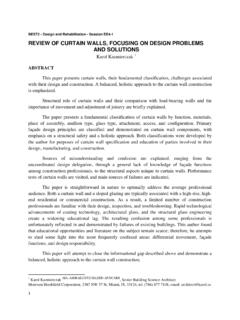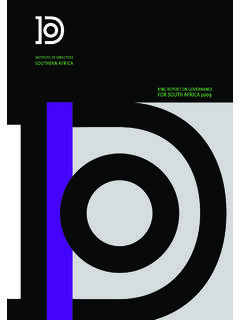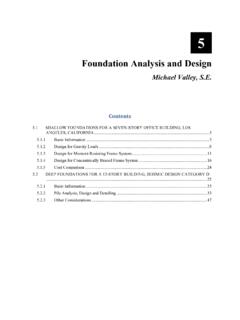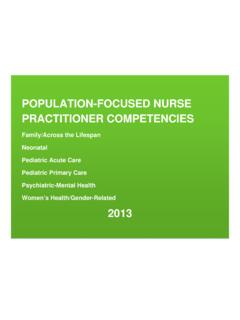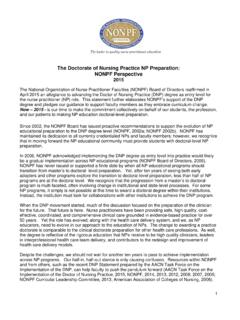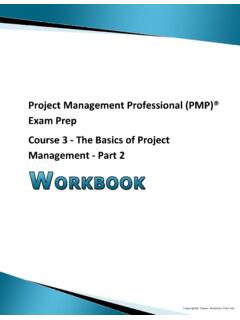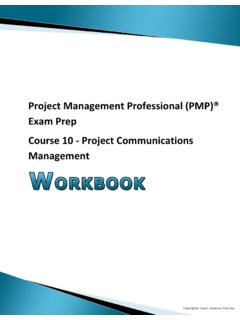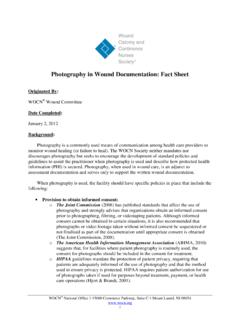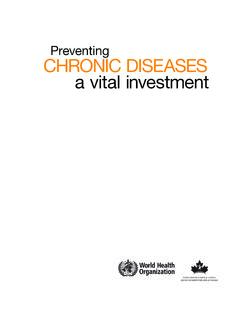Transcription of Brief Interventions for Anxiety in Primary Care Behavioral ...
1 Brief Interventions for Anxiety in Primary Care Behavioral Health (PCBH). Robyn L. Shepardson, PhD. Clinical Research Psychologist VA Center for Integrated Healthcare Wednesday, May 11, 2016. Disclosures I have not had any relevant financial relationships during the past 12 months. The views expressed in this presentation are those of the author and do not reflect the official policy of the Department of Veterans Affairs or other departments of the government Acknowledgements Dr. Jennifer Funderburk Dr. Risa Weisberg RAs in Funderburk/Maisto lab VA Center for Integrated Healthcare Learning Objectives At the conclusion of this session, the participant will be able to: List six potential Interventions for Anxiety in PCBH. Describe the main techniques involved in a variety of Brief Interventions for Anxiety Locate numerous practice tools to support use of Brief Anxiety Interventions Overview Background on Anxiety in Primary care Limitations of existing ESTs for Anxiety Key considerations when adapting ESTs for Anxiety for PCBH.
2 6 Brief Interventions for Anxiety Final thoughts VETERANS HEALTH ADMINISTRATION 5. Primary Care Behavioral Health Model Population-based approach Behavioral health providers embedded into Primary care BHPs serve as consultants to PCPs and are part of the Primary care team Time-limited, episodic care, often delivered in 1 to 4 15-30. minute sessions Consistent with structure, goals, strategies, and culture of Primary care, NOT traditional specialty mental health care (Hunter & Goodie, 2010; Robinson & Reiter, 2015; Strosahl, 1996, 1998;. VETERANS HEALTH ADMINISTRATION Rowan & Runyan, 2005) 6. Anxiety is Prevalent in Primary Care & PCBH. (Ansseau et al., 2004; Cwikel, Zilber, 15-20% have any Anxiety disorder Feinson, & Lerner, 2008; Kroenke, Spitzer, Williams, Monahan, & L we, 2007; Niesenson, Pepper, Schwenk, & Coyne, 1998). Subthreshold Anxiety also as common, (Cwikel et al., 2008; Olfson et al., 1996; Rucci et al., 2003; Wittchen if not more common et al.)
3 , 2002). Anxiety 2nd only to depression in reason (Auxier et al., 2012; Bryan, Morrow, &. Appolonio, 2009; Cigrang et al., 2006;. for referral to PCBH Funderburk et al., 2010). MDD: ~45% current, >70% lifetime (Rodriguez et al., 2004). Impairing and burdensome (Sherbourne et al., 2010;. Stein et al., 2005). VETERANS HEALTH ADMINISTRATION 7. Limitations of Evidence-Based Anxiety Treatment Options Pharmacotherapy Psychotherapy Many patients not open to Most protocols are disorder- taking medication specific Side effects Developed for traditional Not advised for certain specialty care model & format populations Not appropriate for PCBH. Not warranted for transient, setting situational, or mild symptoms VETERANS HEALTH ADMINISTRATION 8. Adapting EST for Anxiety to Fit the PCBH Setting ESTs for Anxiety PCBH Setting Anxiety disorders share common Population-based care etiology, symptoms, maintaining Brief episodes of care processes, etc. Goals of improving function and Cognitive: future-oriented, reducing symptoms perceived threat Patient education, activation, Behavioral : avoidance engagement in own health care Physiological: autonomic arousal similar treatment approach across education and targeted self- different Anxiety presentations management skills for at home practice Goals: Increase awareness and Teach coping skills VETERANS HEALTH ADMINISTRATION 9.
4 (Norton & Philipp, 2008) (Hunter & Goodie, 2010; Strosahl, 1996; Strosahl & Robinson, 2008). 6 Useful (and Brief ). Interventions for PCBH. Adapted from existing evidence-based Interventions Psycho-education Mindfulness & acceptance based Behavioral Interventions Relaxation training Cognitive restructuring Focus on: Adults and GAD, panic, social Anxiety , Exposure phobias, adjustment, Anxiety NOS. (Not PTSD or OCD). Behavioral activation VETERANS HEALTH ADMINISTRATION 10. Psycho-education Providing basic information about Anxiety Can range from passive ( , a pamphlet) to active ( , sessions led by therapist). Advantages Increase patients' knowledge about their condition and correct their misperceptions Less expensive than other approaches Easy to administer More accessible than therapy/meds Provides the rationale for other Interventions Can yield small symptom reduction on its own (Donker, Griffiths, Cuijpers, & Christensen, 2009). VETERANS HEALTH ADMINISTRATION 11.
5 Psycho-education for PCBH. Topics to cover Common symptoms Anxiety spiral Relationship between thoughts, feelings, & behavior Prevalence (normalize). Adaptive nature of Anxiety & fear Goals of treatment (figure from Asmundson, G. J., Taylor, S., Bovell, C. V., &. Collimore, K. (2006). Strategies for managing symptoms of VETERANS HEALTH ADMINISTRATION 12. Anxiety . Expert Review of Neurotherapeutics, 6, 213-222. ). Psycho-education for PCBH. VETERANS HEALTH ADMINISTRATION 13. (figure from P. Roy-Byrne et al. (2009). Brief intervention for Anxiety in Primary care patients. Journal of the American Board of Family Medicine, 22, 175-186. ). Psycho-education Resources CIH handouts: Anxiety , Panic attacks, Action Plan for Anxiety , Stress Fact Sheet, Stress Response and How It Affects You, etc. Patient education tab: Other handouts Panic attack info: Intro to Anxiety assessment: What is rumination?: Fight or flight response: Safety behaviors: Breathing: Anxious worry: Figure in Hunter, Goodie, Oordt, & Dobmeyer (2009).
6 ADAA website (Consumers section). Overview: Statistics: Webinars: VETERANS ADMINISTRATION 14. Videos: Mindfulness and Acceptance- Based Behavioral Techniques Growing in popularity over last ~15 years MABBTs emphasize: Increasing awareness of present-moment experiences Practicing non-judgmental acceptance (Hayes, 2004; Roemer, Williston, Eustis, & Orsillo, 2013; V llestad, Nielsen, & Nielsen, 2012). Increasing values-driven actions Effective in reducing Anxiety in SMH settings (V llestad, Nielsen, & Nielsen, 2012). ~8-16 sessions of 90-120 minutes Primary care setting Recommended in clinical literature VETERANS HEALTH ADMINISTRATION 15. MABBTs adapted for PCBH. Mindfulness Simple mindful breathing exercise What is mindfulness: Mindfulness skills: (Roemer, Williston, Eustis, & Orsillo, 2013). Help get some space from Anxiety (defusion). Thoughts/Feelings Facts/Truth , I'm having the thought that . Highlight their agency and ability to pursue values Past experience when they pushed through distress or discomfort VETERANS HEALTH ADMINISTRATION 16.
7 MABBTs adapted for PCBH. Eliciting the patient's values Verbal inquiry, , What matters most to you in your life? List or worksheet Identify what valued activities are being avoided due to Anxiety Help them set 1-3 specific goals that would move them in the direction of their priority values Troubleshoot by identifying potential barriers and developing corresponding VETERANS coping strategies HEALTH ADMINISTRATION 17. MABBTs adapted for PCBH. (& Tobias Lundgren). 1 2 3 4 5 6 7. Not at all VETERANS Slightly HEALTH Somewhat ADMINISTRATION Consistent Remarkably Very Bull's 18. consistent consistent consistent consistent consistent eye! Relaxation Training EST for Anxiety (Eppley, Abrams, & Shear, 1989; Manzoni, Pagnini, Castelnuovo, & Molinari, 2008). Teach patient to attend to and control their physiological arousal Variety of techniques Diaphragmatic breathing Progressive muscle relaxation Applied relaxation Autogenic training Transcendental meditation Traditional protocols call for 8-15 50-minute sessions VETERANS HEALTH ADMINISTRATION 19.
8 Relaxation Training Adapted to Fit PCBH Format Skill demo Educate re: physiological relaxation response Teach 1 skill via a 3-5 minute demo Have patient rate tension or relaxation level before and after on 0-10 scale to get data Address common issues Explain relaxation as a skill (like playing instrument). Plan when to do regular practice Give written guide and/or audio aid Problem solve barriers ( , location, noise, thoughts). If skeptical Normalize concerns Note similar others' success with it VETERANS HEALTH ADMINISTRATION 20. Propose trying it as experiment (now, and at home). Relaxation Training for PCBH. Provide a menu of options Deep breathing Mindfulness meditation Progressive muscle relaxation Guided imagery VETERANS HEALTH ADMINISTRATION 21. Relaxation Training Resources Encourage regular at-home practice and PRN use Self-directed OR Guided by audio or video aid For you: Module 13 of Cully & Teten (2008) Brief CBT Manual For patients: handouts with instructions CIH Patient Education Materials (Relaxation fact sheet, General relaxation exercise, Deep breathing, Abdominal breathing, Visualization guided imagery, Meditation, PMR): Relaxation exercises (deep breathing, imagery, PMR): PMR Script: or Relaxed breathing: Mindfulness exercises (mindfulness meditation, body scan, mindful eating, 5 senses): VETERANS HEALTH ADMINISTRATION 22.
9 Cue-controlled relaxation: Figure in Hunter, Goodie, Oordt, & Dobmeyer (2009). Relaxation Training Resources Free mobile apps Mindfulness Coach Virtual Hopebox (Relax Me). Tactical Breather Breathe2 Relax Headspace Calm OMG I Can Meditate! CBT-I Coach (Tools Quiet Your Mind). PTSD Coach (Manage Symptoms Tools). VETERANS HEALTH ADMINISTRATION 23. Relaxation Training Resources Websites with a good selection of audio files (with spoken instructions and calming music) to guide patients through various relaxation exercises ~healthed/ VETERANS HEALTH ADMINISTRATION 24. Cognitive Restructuring Learn to identify and evaluate the accuracy of negative (Arch & Craske, 2009;. thoughts and develop alternative thoughts Beck & Dozois, 2011). Address cognitive distortions Automatic thoughts, thought records, downward arrow exercises, Behavioral experiments to test hypotheses, etc. Efficacious across Anxiety disorders (Norton & Price, 2007). BUT usually delivered in 12 to 24 50-minute sessions (Beck & Dozois, 2011).
10 VETERANS HEALTH ADMINISTRATION 25. Cognitive Restructuring Adapted for PCBH. Highlight contribution of negative thought patterns and cognitive distortions to Anxiety spiral Educate that thoughts are hypotheses, not facts (Demertzis & Craske, 2006). Focus on overestimating and catastrophizing Catch yourself and label it as your Anxiety Encourage to challenge thoughts Consider alternative explanations Evaluate the evidence for and against VETERANS HEALTH ADMINISTRATION 26. Example Illustrating Connection Between Thoughts & Feelings Thought: That must be the dog again. The poor thing can hardly see where Feeling: he is going when it is Sad, calm light out, much less in the dark. Situation: Thought: You wake up in That must be the the middle of the stupid dog again. I Feeling: night due to a don't know how much Angry, annoyed crashing noise longer I can put up coming from with him waking us downstairs up every night. Thought: That was too loud to be from the dog.
